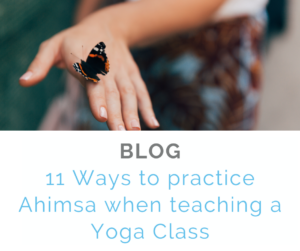I want to start by saying I am a huge supporter of mindfulness meditation; it is proven to be a very popular meditation style that helps a lot of people. However, there a few things about the whole mindfulness ‘movement’ that should be considered.
Mindfulness is not new nor is it groundbreaking. It is a type of traditional meditation, and meditators of all countries and faiths throughout history have been doing it for a very long time. It’s just that recently it’s been stripped back and re-packaged for a modern, secularised market so that it is commercially acceptable to everyone. There is nothing wrong with this as it helps to bring meditation to the general population, something to be applauded, but it’s NOT a magic panacea for everybody.
Mindfulness meditation and in fact most traditional meditation practices are actually very advanced mental disciplines. The stereotypical perception of a Yoga practitioner meditating is someone sat in a Lotus Pose, maybe lying down in Savasana (Corpse Pose), eyes closed. Outwardly quiet, attention focused, mind cleared of everything and thinking of nothing. THIS IS REALLY HARD.
In reality, a lot of people are probably just sat, quietly thinking about their day with their eyes closed, not achieving a state of meditation at all. Potentially they could be doing the exact opposite; sat catastrophising with their mind whirring and creating a stressed internal dialogue.
In my 15 years teaching Yoga I can tell you that a lot of people new to the practice find the end part of the class (the lying down or sitting still bit) really frustrating; this is the relaxation or meditation part. These are the people who fidget, feel uncomfortable and feel like a 5-minute Savasana goes on for an eternity. Generally they are also the ones whose lives are busy or stressful and their thoughts run like a hamster on a wheel. A lot of the time it’s the people whose minds are like this ALL THE TIME. These are the people that need meditation the most but who will find it impossible at first, particularly if they jump straight in for a traditional approach meditation.
The question is whether a practice that causes frustration, when it is meant to promote calm, is worth pursuing for these individuals at this stage of their journey. All it will do is put them off continuing with it, which is a shame as they would really benefit from it.
So, what’s the alternative? Well if you want to try a more traditional meditation style then make sure you always do something physical before you meditate and then use a prop. By that I mean something to anchor your mind. You could use sound, such as chanting or singing or a mantra. Adding a mala (like a rosary used to count the amount of repetitions of a mantra) is a great option too. Another good option is to opt for a guided meditation where there is someone talking, with instructions of things to follow. So there is no gaping voids of silence for the busy brain to fill. Personally, I would always recommend Yoga Nidra.
Alternatively, you can meditate whilst doing something else; exercise, yoga, walking in nature, sewing, baking, gardening are some examples. When doing these activities make a conscious effort to be fully present in your actions and constantly refocus your mind on what you are doing any time it gets distracted, which it will, many times at first. That is true mindfulness to me and is a lot more accessible for a lot of people.
Aimee Newton is a qualified Osteopath and has been teaching yoga for 15 years.







